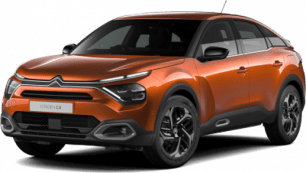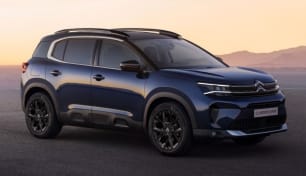The C4 brings some interesting practicality elements. There are a few areas where it’s even better than the improved layouts of recent Peugeot models.
The cabin feels spacious, with the C4’s relatively long wheelbase providing ample room in both rows. Adjustability is good for the driver, although it is worth noting that the seats have an odd blend of manual adjust for sliding fore and aft, contrasted with electrical adjust for seat height and tilt.
Comfort is superb from the memory-foam stuffed and thick synthetic-leather-clad seats. I don’t know why more cars don’t adopt this approach to seat design. You sink into these seats and are left feeling like you’re floating above the ground rather than sitting on something. The feeling here is unmatched in the small SUV space.
The massage function is a wholly unnecessary addition, and with the thick seat cladding, it didn’t really add much to the experience.
The seat bases aren’t too high either, unlike some cars in the SUV class, but the dash design itself is very tall, so people shorter than my 182cm height might find extra adjustment is required to see over the bonnet.
There are large bottle holders in each door with a very small bin; dual cupholders in the centre console, and a small armrest console box.
There’s also an odd little two-tiered shelf under the climate unit, with a removable base for extra storage underneath. It seems to me that the top shelf is a missed opportunity to place a wireless charger, although connectivity is handy with the choice of USB-C or USB 2.0 to connect to the wired phone mirroring.
A big win is the presence of a full dial set for not just volume but the climate unit too. This is something the Citroen scores over some of the new Peugeots, which have moved the climate functions to the screen.
Somewhat less wonderful are the digital dash cluster and holographic head-up display. These seem to be a bit redundant in the information they display to the driver, and the digital dash has no customisation, leaving me wondering what the point of it is.
The C4 also has some interesting innovations on the front passenger side. It has an unusually large glovebox and a neat little sliding tray, which looks like something from a Bond car.
It also has a slide-out tablet holder. This odd little thing lets you securely mount a tablet to the dash to provide a multimedia solution for the front passenger, which may be good for entertaining larger kids on longer journeys. Or adults who don't want to talk to the driver. It’s a neat inclusion, but I’m not sure how many people will use it in the real world.
The back seat offers a remarkable amount of room. I’m 182cm tall and had heaps of knee room behind my own driving position. The nice seat trims continue, as does the patternwork and detailing, which is the kind of attention to detail you don’t always get from rivals.
Headroom is a little limited, but you also score dual adjustable air vents and a single USB port.
The boot comes in at a hatch-sized 380-litres (VDA). It’s a neat, square shape with no little cutaways at the sides and is just big enough to fit our full CarsGuide demo luggage set, but leaves no room to spare. The C4 features a space-saver spare wheel under the floor.

